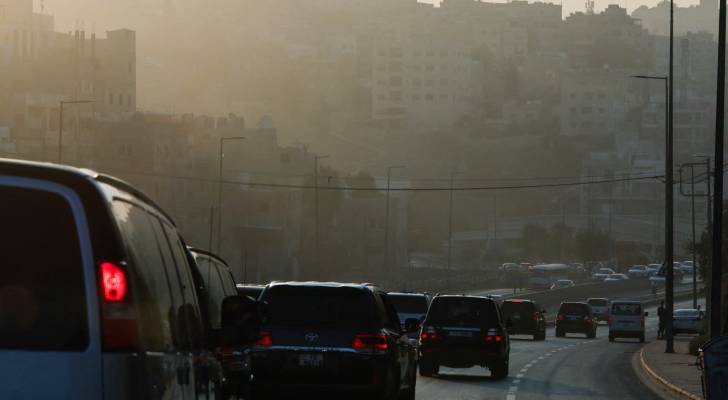Amman smog (Credit: Getty Images)
Experts urge Jordan to build national air quality monitoring system
Jordan is facing growing environmental challenges, with air quality emerging as one of the most urgent issues requiring national attention.
While many countries have made significant progress in protecting their citizens from pollution, Jordan is still in need of a comprehensive and structured strategy. Although the Jordanian Ministry of Environment has launched an online platform to display air quality indicators in select areas, Amman, Irbid, and Zarqa, this step, while important, marks a beginning rather than a conclusion.
In this context, the Jordanian Association for Respiratory Care has issued a strong, science-based call for the development of an integrated national air quality monitoring system. The initiative, according to the association’s president, respiratory diseases consultant Dr. Mohammad Hasan Al-Tarawneh, should be built in partnership between the Ministry of Environment, the Ministry of Health, and the Meteorological Department, with the goal of protecting public health, especially among vulnerable populations.
“Air quality is no longer a luxury issue, it has become a major challenge to the health of Jordanians,” said Dr. Tarawneh. “Each person takes about 22,000 breaths per day, and the air we breathe must be clean to ensure a healthy life. Global studies, including reports from the World Health Organization, indicate that air pollution causes over 7 million deaths annually worldwide, 4.2 million of which are due to outdoor air pollution alone. These alarming numbers make environmental monitoring a life-saving task, not just a routine procedure.”
Dr. Tarawneh added, “We’re seeing a rise in chronic respiratory diseases in Jordan, including asthma, COPD, and higher rates of lung cancer. These illnesses are directly exacerbated by air pollution. That’s why we are calling for current monitoring efforts to be scaled into a fully integrated system, drawing from successful international models.”
- Comprehensive system needed -
- Expanding the national monitoring network:
Though there are monitoring stations in Amman, Irbid, and Zarqa, Jordan must expand this network to cover all governorates, as well as industrial and agricultural zones. For instance, the US state of Minnesota has seen improvements in air quality since 2003, but now faces new challenges from wildfire smoke drifting in from Canada.
- Public awareness and daily transparency:
Authorities must provide daily air quality data to the public and media using the globally recognized Air Quality Index (AQI). The US Environmental Protection Agency (EPA) classifies this index with color-coded levels ranging from 0 to 500 to help people understand the risks:
- Green (0–50): Good air quality
- Orange (101–150): Unhealthy for sensitive groups (children, elderly, asthmatics)
- Red (151–200): Unhealthy for everyone
- Maroon (301–500): Hazardous, requires immediate action
This clear communication empowers individuals to make informed decisions, such as avoiding outdoor activities or wearing masks when air quality is poor.
- Integrating climate change into monitoring:
A recent international report noted that warmer and drier summers are leading to more wildfires and higher ozone pollution levels. In Jordan, climate change could result in more dust storms and rising temperatures, worsening air quality. The Meteorological Department must therefore play a key role in analyzing pollution data and issuing early warnings.
- Protecting vulnerable populations:
The AQI shows that some groups are more at risk, including:
- People with heart and lung conditions
- Children and teenagers
- Adults over 65
- Pregnant women
Monitoring systems must provide targeted information and practical advice to reduce exposure risks for these groups.
- A real-world example -
India offers a compelling model. The company Perfect Pollucon Services (PPS) analyzed air quality at a metal factory in Thane, where monitoring data revealed high levels of fine particulate matter (PM2.5) during working hours. Employees reported various health complaints.
After upgrading the factory’s ventilation system, pollution levels dropped by 38 percent, and employee complaints fell by 70 percent. This case shows how air quality monitoring can save lives and improve productivity.
- Conclusion -
Dr. Tarawneh stressed that building a national air quality monitoring system in Jordan, through collaboration between the Ministry of Environment, Ministry of Health, and Meteorological Department, is not merely an environmental project, but an investment in the health and future of Jordanians.
He concluded, “We believe in the ability of our national institutions to work together and achieve this vision—ensuring every Jordanian breathes clean air, free from the devastating effects of pollution.”




